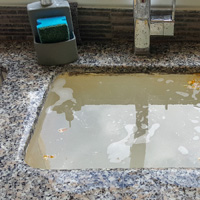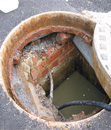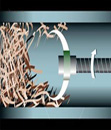Call Premier Drainage Services Today
Call Premier Drainage Services Today
Premier Drainage Services
Form over 30 years Premier Drainage Services have been keeping the drains flowing properly in Hertfordshire and all over the South East. From the unblocking sinks, to installing new drainage systems for our domestic, commercial and Council customers, we’ve done it all.
We pride ourselves on providing a prompt, friendly and reliable service at very reasonable rates. We offer free quotes so, if your drains are in need of any kind of care or attention, why not contact us today.
24/7 Call Out
 Drains seem to have a nasty habit of blocking at the most inconvenient time. Last thing at night, just before you are due to leave for a holiday, you name it! Premier Drainage Services Ltd are here to help with your blocked drains no matter when you need us, day or night.
Drains seem to have a nasty habit of blocking at the most inconvenient time. Last thing at night, just before you are due to leave for a holiday, you name it! Premier Drainage Services Ltd are here to help with your blocked drains no matter when you need us, day or night.
Drain Repairs

If you have a broken or blocked drain, you need to get it repaired as soon as possible. We will inspect, diagnose and carry out the necessary drain repairs in no time at all. We use CCTV technology to locate the damage, enabling us to repair your drains, getting your water and services flowing properly again.
9.5/10
Drain Clearance
 Drains can be blocked by all sorts of things. The most common cause of drain blockages are caused by waste kitchen fats and oils that have been poured down sinks. Other foreign objects such as or silt, dirt or leaves washed into gullies can also accumulate and cause a serious blockage. When Covid first struck a lot of drains were blocked with kitchen roll.
Drains can be blocked by all sorts of things. The most common cause of drain blockages are caused by waste kitchen fats and oils that have been poured down sinks. Other foreign objects such as or silt, dirt or leaves washed into gullies can also accumulate and cause a serious blockage. When Covid first struck a lot of drains were blocked with kitchen roll.
CCTV Drain Surveys
 Should you be plagued by a persistent fault in your drains, a CCTV drain survey could be the answer and will allow you to see the problem in full colour on our monitor. The pipe blockage could be anything from a collapsed pipe to a cuddly toy that has somehow found its way around the U-bend. Our CCTV system will enable us to find the problem without having to resort to expensive excavations.
Should you be plagued by a persistent fault in your drains, a CCTV drain survey could be the answer and will allow you to see the problem in full colour on our monitor. The pipe blockage could be anything from a collapsed pipe to a cuddly toy that has somehow found its way around the U-bend. Our CCTV system will enable us to find the problem without having to resort to expensive excavations.
Root Cutting
 All sorts of roots manage to find their way into drainage systems through joints, fractures and broken pipe work. The roots do this as they seek out the water and nutrients inside the pipes, the roots then form a mass and the hair thin roots that initially entered the system can turn into tap roots that will break the pipe collar as they expand causing major damage.
All sorts of roots manage to find their way into drainage systems through joints, fractures and broken pipe work. The roots do this as they seek out the water and nutrients inside the pipes, the roots then form a mass and the hair thin roots that initially entered the system can turn into tap roots that will break the pipe collar as they expand causing major damage.
24/7 Emergency Service
24/7 Emergency Service
CCTV Drain Surveys
CCTV Drain Surveys
Damaged Drains Repaired
Damaged Drains Repaired
Need help? Call us today!
If you need a rapid response to your drain problem then call us today on 01438 222 758 or fill in our contact form to get a FREE QUOTE.
We provide drainage services throughout Hertfordshire, Bedfordshire, Essex and London.
Need help?
Call us today!
If you need a rapid response to your drain problem then call us today on
01438 222 758
or fill in our contact form to get a
We cover Hertfordshire,
Bedfordshire, Essex and London.
Blocked drains - Drain repairs - CCTV drain surveys - Leak detection - Watton-at-Stone - Hertfordshire
Watton-at-Stone is a quaint little village in Hertfordshire, situated midway between the towns of Stevenage and Hertford in the valley of the River Beane. The 2021 census showed a population of 2,614 living in 1,036 households. Watton-at-Stone is also a civil parish in East Hertfordshire District Council. Watton-at-Stone can be presented with or without the hyphenation, as both spellings are equally valid and have both been used over the years. However, the local population of Watton-at-Stone often drop the ‘at stone’ suffix.
Village life in Watton-at-Stone
Owing to its diminutive size, there is very little employment directly within Watton-at-Stone and it largely serves as a dormitory for commuters to London or to the nearby towns with half-hourly trains to Moorgate station.
Watton-at-Stone has a primary and nursery school. The co-educational Heath Mount private school is located on the outskirts in the private estate of the Grade II listed Woodhall Park.
The A602 formerly ran through the centre of Watton-at-Stone between Stevenage and Hertford before a bypass was built in 1984 through farmland to the north-east. The section of the road to Hertford was renamed the A119, and the A602 then ran out of Watton-at-Stone to Ware. Watton-at-Stone is served by a railway station on the Hertford Loop Line. The station opened for passengers on 2 June 1924, was closed on 11 September 1939, though the line continued to run through Watton-at-Stone, and reopened on 17 May 1982, paid for partly by public subscription.
In Watton-at-Stone itself there is a small convenience store, café and takeaway restaurant as well as a hairdresser, butcher’s shop and two public houses.
History of Watton-at-Stone
The name Watton first appeared in writing in an 11th-century collection of 10th-century Anglo-Saxon wills as Wattun. It was later recorded in the Domesday Book of 1086 as both Wodtune and Watone. The origin of the word is uncertain, and is variously ascribed to Old English wád or woad, and ton meaning small farming settlement; or waden meaning ford; or from waétan meaning watery.
The suffix -at-Stone dates from the early 13th century and may be derived from the presence of two large examples of Hertfordshire puddingstone, now situated at the former Waggon and Horses public house. However, it is far more likely that the suffix refers to the Roman road, which was described as a Stone Street that ran from Verulamium, which is now St Albans, fording the River Beane at Watton-at-Stone.
The area where the bridge over the railway was built was shown on tithe maps as a common, and the fields to the east and west of this point were named Stoneyfield and Further Stoneyfield. It is deduced that the Roman Road passed through this area, and the later village took its name from the important route way. In the 1950s, sections of the road agger or embankment, composed of large flint nodules, could still be seen at several points in Watton-at-Stone; most obviously, the northern boundary of the grounds of Chestnut House preserves the line of the road.
Prehistoric archaeological finds at Watton-at-Stone
Archaeological finds indicate prehistoric activity in the Watton-at-Stone area before the village was fully established. The earliest finds are Palaeolithic hand axes that were found in Watton-at-Stone and also at the Frogmore gravel pit, and there are traces of a Mesolithic site near the roundabout at the northern end of the bypass. Neolithic pits were found off Station Road and several Neolithic or Bronze Age ring ditches are evident in fields surrounding Watton-at-Stone.
To the west of Watton-at-Stone near Raffin Green is a significant late Bronze Age site and Iron Age enclosure in the Great Humphreys field. It was close to here that the Iron Age Aston Mirror was found, closer to Watton-at-Stone than to the village of Aston, but technically in Aston parish due to the convoluted border. It is now kept at the British Museum. Another Iron Age enclosure was located by Broom Hall Farm, with an adjacent Roman farmstead and also a nearby Roman crematorium from which twenty seven burials were extracted. A collection of possibly Belgic armour and weaponry was discovered in the mid-19th century by workers digging a drain to the west of Watton-at-Stone.
Roman and Anglo-Saxon origins of Watton-at-Stone
The origins of Watton-at-Stone are from the construction of the Roman road, which crossed the High Street at the point of the modern milestone. Archaeological evidence suggests significant Roman activity at the roadside, with a probable Roman building near the Rectory and Roman field boundaries off Station Road suggesting some permanent occupation. Watton-at-Stone was possibly a market place trading to travellers as they slowed to cross the River Beane, and the High Street may have been a pre-existing track and therefore the new Roman road formed a crossroads here.
Anglo-Saxon settlers developed Watton-at-Stone further into a village, with evidence of early Anglo-Saxon field boundaries and a crematorium off Station Road. It is likely that the focus of the Anglo-Saxon settlement was on the high ground at Watton Green, overlooking the Roman road and river valley below. There was a possible battle between the Danes and Saxons which took place on a field named “Danesfield” to the west of Watton-at-Stone, although the field name is the only evidence to suggest this. If a battle did occur here it would most likely to have been in 911 with 1016 suggested as an alternative possible date.
The Watton manor was anciently held by the Crown but by 1066 the Lord of Watton manor was Alwin Horne, an Anglo-Saxon thegn who owned other lands at Walkern, Sacombe and Middlesex. Alwin Horne is believed to have fought at the Battle of Stamford Bridge under King Harold in 1066 and later that year killed at the Battle of Hastings.
Middle Ages and early modern period in Watton-at-Stone
The Domesday Book states that Watton-at-Stone in 1086 consisted of eighteen households, ten villagers, four smallholders and four slaves, suggesting a population of between sixty five and ninety. The manor was worth £5 and it had a mill, woodland with 100 pigs and a meadow. It was jointly held by Derman of London and Alward the noble, who were both moneyers from London. There was an additional manor associated with Watton-at-Stone that had six households and a church, which could have been the Woodhall manor. The first mention by name of the Woodhall manor was in about 1130 when it was held by Ralph de Watton.
Derman’s great nephew Henry fitz Ailwin, the first Mayor of London, inherited the Watton manor in 1165. He built a hermitage chapel in what is now Chapel Wood and possibly built a new manor house in what is now Well Wood. At about this time, perhaps as a consequence of Henry fitz Ailwin’s new buildings, a new manor called Crowborough emerged from the Watton manor. Crowborough was first referenced in 1266 when it was held by Alice de Rivers. Crowborough Hall stood at Watton Green and the moat which surrounded it can still be seen to this day.
Hugh Bardolf inherited Watton manor in 1287, later it was held by John Bardolf and Thomas Bardolf with the Bardolf family owning the Watton and Crowborough manors at various times until 1562. During this period the house and chapel in Well Wood and Chapel Wood were abandoned, and so in about 1520 the Watton manor was renamed Bardolf manor and the manor house moved to what is now Bardolphs Farm. A new manor called Watkins Hall was created and was first known to be held by Thomas Munden in about 1540.
Philip Boteler inherited the Woodhall estate in about 1375 and later descendants to have the title included Philip Butler and John Boteler who held the Watton, Woodhall and Crowborough manors. The three estates were in possession of the Botelers until as late as 1780.
In 1662 brothers Maurice Thomson and Sir William Thompson, who had grown up in Watton-at-Stone, founded Watton’s first free school for twenty poor children.
After Woodhall was mostly destroyed by fire in 1771, from which an elderly John Boteler was able to escape, building of the new house began in 1775. The notorious Thomas Rumbold took possession of Woodhall in 1777, followed by Paul Benfield in 1793. The estate was then bought in 1801 by Samuel Smith and the Smith family later combined the Watton, Woodhall and Crowborough manors into one and still holds it today.
In later years, the natural springs in the area once made Watton-at-Stone a popular spa town. The village has a number of dwellings dating from early Tudor, such as Watton Place, through to late Georgian constructions.
The parish church is dedicated to St Andrew and St Mary. It stands on thirteenth-century foundations and dates from the early-mid fifteenth century, and is built in the Perpendicular style. A chapel was added to the north side of the church in the late fifteenth century. The building is constructed from flint, and is protected by a Grade II heritage listing.
A shooting at Watton-at-Stone
In 1833 a Watton-at-Stone local named James Sheppard was fined five shillings “for breaking glass”.
It is not unknown if the fine was ever paid since, in the late evening of 7th December 1833, Sheppard was shot by Robert Percy, the Watton-at-Stone village Constable, outside the George and Dragon public house. This was after a fight in which, it is assumed, Sheppard was resisting his transfer into the ‘lock-up’ on the other side of the road.
The George and Dragon still serves to locals and visitors to Watton-at-Stone to this day, and the lock-up still exists, although converted to a garden shed and hidden behind a blanket of ivy.
Hertfordshire Constabulary was only created in 1841 so the policeman in question would have been on loan from the Metropolitan Police at a local landowners’ request.
A report at the time stated that on the night of Saturday 7th December 1833, Watton-at-Stone villagers heard two men struggling together. A shot rang out and James Sheppard fell and died the next morning. At the inquest, a witness testified to Sheppard’s drunkenness and, with less certainty, to Robert Piercy the constable’s forbearance. In the course of the inquest, Piercy was accused of megalomania, drunkenness and abusing his authority. A charge of manslaughter was made against the Watton-at-Stone constable. Angry villagers are reported to have chased Piercy out of Watton-at-Stone. Other sources claim that the constable had been hired from the newly formed Metropolitan Police at the request of local landowners. Sheppard was a known troublemaker who threatened the policeman with a bludgeon. Eventually a verdict of “Justifiable Homicide” was recorded, and Piercy was shortly transferred back to pounding the London streets.


